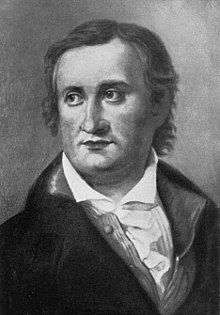Thomas Johann Seebeck | |
|---|---|
 | |
| Born | 9 April 1770 |
| Died | 10 December 1831 (aged 61) |
| Known for | Discovering the thermoelectric effect |
| Scientific career | |
| Fields | Physics |
Thomas Johann Seebeck (German: [ˈtoːmas ˈjoːhan ˈzeːbɛk]; 9 April 1770 – 10 December 1831) was a German physicist, who, in 1822, observed a relationship between heat and magnetism. Later, in 1823, Hans Christian Ørsted called this phenomenon the thermoelectric effect.
Seebeck was born in Reval (today Tallinn) to a wealthy Baltic German merchant family. He received a medical degree in 1802 from the University of Göttingen, but preferred to study physics. From 1821 to 1823, Seebeck performed a series of experiments trying to understand Ørsted's findings from 1820. During his experiments, he observed that a junction of dissimilar metals produces a deflexion on a magnetic needle (compass) when exposed to a temperature gradient. Because Ørsted had discovered that an electric current produces a deflexion on a compass transversal to the wire, Seebeck's results were interpreted as a thermoelectric effect.[2] This is now called the Peltier–Seebeck effect and is the basis of thermocouples and thermopiles.
- ^ George Theodore Dippold (1904). A Scientific German Reader. Ginn & Co.
- ^ Ørsted, Hans C. (1823). "New experiments by Dr. Seebeck on electromagnetic effects". Annales de chimie et de physique. 22: 199–201.